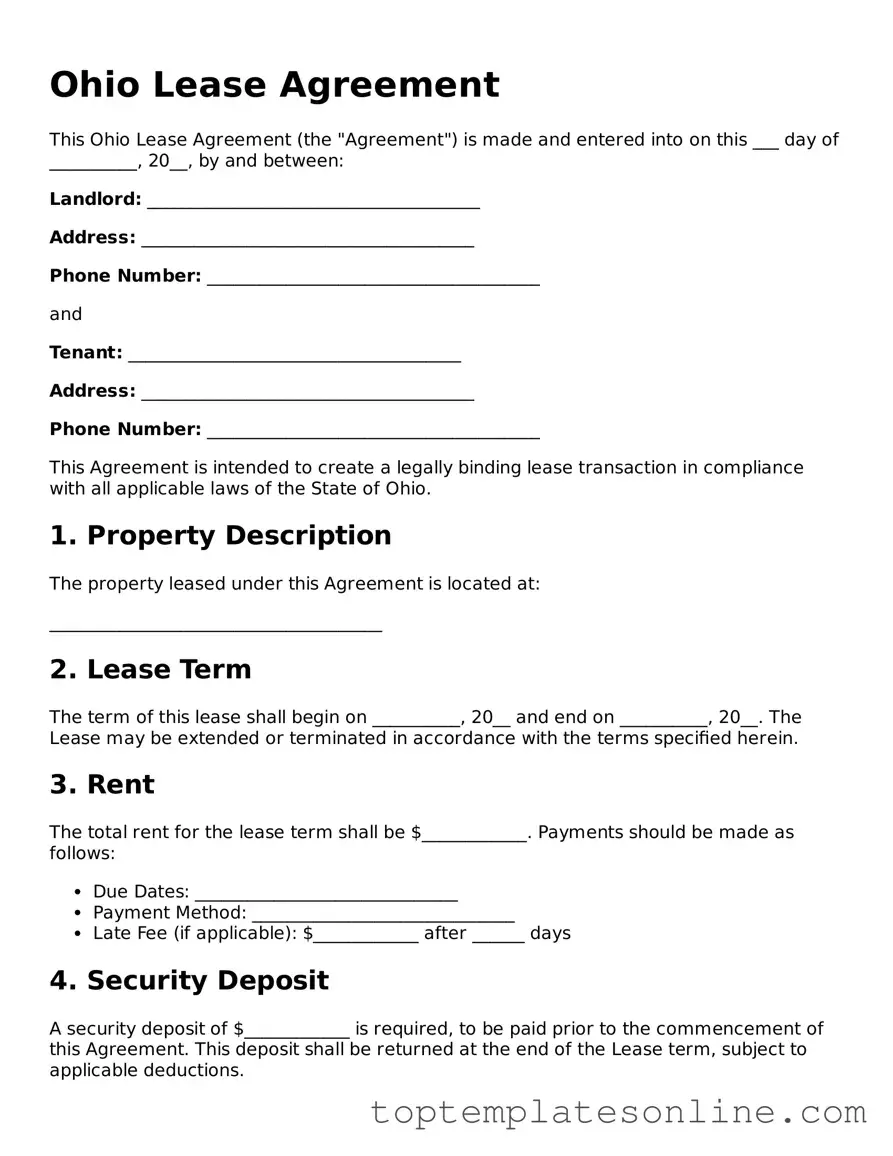Blank Lease Agreement Template for Ohio State
The Ohio Lease Agreement form is a legal document that outlines the terms and conditions under which a property owner rents out their property to a tenant. This essential agreement serves to protect the rights and responsibilities of both parties, ensuring clarity and mutual understanding. Understanding its components can help both landlords and tenants navigate their relationship effectively.
Customize Lease Agreement Here
